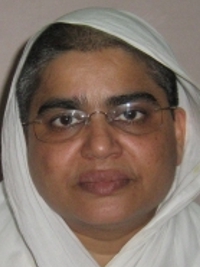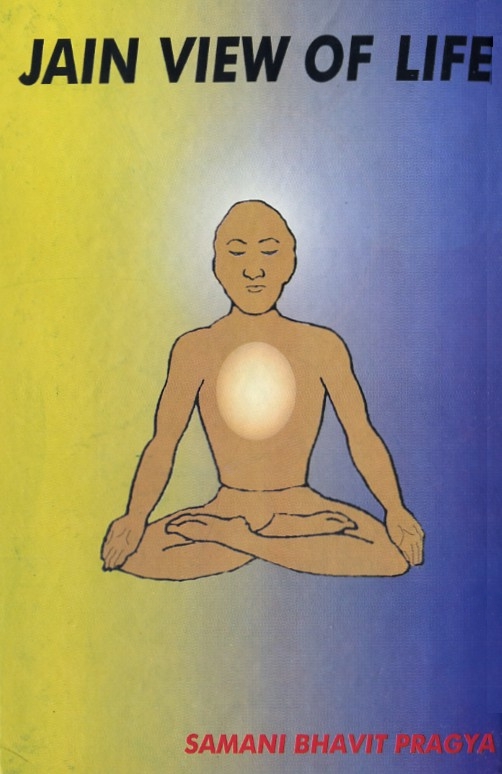Preksha Dhyana
The culture of Greece has been thought and spiritually oriented, just like India. The philosophy is also based on an understanding of man's inner self. In Greece it was said that a common man once asked four questions to a sage. "What is the greatest thing in the world?" The sage replied that the greatest thing in the world is the sky. The next question was, "What is dynamic?" The sage replied that thoughts are dynamic. The third question was, "What is an easy task?" The sage replied that the easy task was giving advice without asking others. The last question was, "What is the difficult job?" The sage said to him that the difficult thing is to see one's self.
Comprehensive System
Preksha Dhyana is the technique of seeing oneself. Preksha means to perceive carefully and profoundly. The term Dhyana is mostly defined as concentration of thinking on a particular subject for a length of time. Here in this technique, Dhyana is strictly concerned with perception. Preksha Dhyana means concentration of perception of thought, specific center or breathing etc. The entire system of Preksha meditation can be classified into three levels, which include both meditative practice and physical discipline.
Preksha meditation is a modern expression of a centuries old technique which was discovered by Ganadhipati Gurudeva Tulsi and Acharya Mahapragya through untiring efforts and experimental processes for a period of twenty years. This practice is designed after the process of meditation which has been practiced by Lord Mahavira. Preksha Dhyana is for everyone. This technique neither belongs to any tradition or any group of handpicked people. It is formulated as a comprehensive system irrespective of race, religious background, language, colour, sex, and belief.
Goal Achievement Through Preksha
Preksha meditation is the system to be free from misery and sorrow. The world is full of distress. Life starts with crying from the moment of birth. Birth itself is suffering. In turn, anyone who has been born is sure to encounter the suffering of sickness, old age, and finally death. Man is torn between likes and dislikes throughout his life. This circle goes on ceaselessly.
Observation of Reality
There are a few rare persons like Mahavira, Buddha, Christ, etc., who start observing reality within the framework of their bodies like a research scientist, moving from the gross to the subtle truth. When Buddha was born, a heavenly announcement occurred to the effect that, once he perceived suffering, he would become a mendicant. Seven days after his birth, his mother died and he was raised by his mother's sister thereafter. His father arranged for tight security so that the child could not see any troubling sights, but the reality is that whatever happens will happen. Nobody can stop the course of future from happening.
Once Prince Buddha was passing through the a city in his chariot. On the way, he saw an old man, and said to his charioteer, "Who is this man? Why is he like this?" The charioteer replied that there were three stages in life: infancy, youth, and then did age. The charioteer pointed out that all persons who are born are subject to old age and death, which is inescapable. This idea struck Buddha's mind and he began to think it over very carefully.
On a second trip to the city, Prince Buddha saw a deformed man. When he asked the charioteer about the man, the charioteer replied that the man was sick, that the body is subject to many ailments, and that anyone can suffer from disease. When the pain sensation producing karma arises, man suffers from sickness. Buddha considered this second idea deeply.
On the third trip to the city, Buddha came across a dead body which was being carried on the shoulders of four persons. He became very curious and asked the charioteer, "What are those men carrying?" The charioteer replied that the man's life had come to an end, so they are going to bury him. In surprise, Buddha asked, "Will I have to die?" The reply was, "Everyone is destined to die. It is an inevitable consequence of being born, although no person likes it, and it is equally unpleasant to each one."
The fourth time, Buddha came across a group of white robed people. Buddha asked the charioteer, "Who are these?" The charioteer replied, 'Those people are monks."
Buddha asked him, "What do you mean?" The charioteer said that they wanted to be free from misery and sorrow, so they became monks. Buddha got the right solution to all these questions. To be free from misery and sorrow, he became a monk and continued investigating within himself to discover the deepest cause of suffering. Buddha practiced spiritual training for six years. He became enlightened, and propounded the four noble truths: Suffering, the cause of suffering, the eradication of suffering, and the way to eradicate suffering. Lord Mahavira practiced meditation and penance for twelve and a half years. As a result, he achieved a higher state of consciousness, namely, infinite knowledge, infinite perception, infinite energy, and pure consciousness. He found the root cause of suffering regarding attachment and aversion.
Theoretical as Well as Practical
Preksha meditation is a theoretical as well as a practical system of being free from misery and sorrow that enables an individual to achieve complete harmonious evolution of the physical, mental, and spiritual planes. Through meditation, a level of awareness is attained in which a solid spiritual body is developed and nurtured. The ultimate goal of Preksha meditation is the transcendence of physical boundaries through the development of the soul and spirit within man.
The Technique of Body Perception
The technique of body perception can be performed in such a way so as to concentrate the mind in each part of the body, from toe to the top of the head. This involves going from outside to inside, layer by layer, seeing and feeling sensation and vibration. This means merely witnessing what is happening in the body without getting involved with it. If thoughts come, merely watch them. Your flow of thought will be a torrent at first, but, surprisingly, it will slow down. Eventually it will settle on a thought of some particular thing that is important to you. That is when you are apt fresh insight into the matter. Be aware of every micro phenomena without like or dislike. Stand up (five minutes) and go from toe to head and head to toe, first slowly and carefully and then quicken the rate.
Our spiritual energy begins from the soles of our feet and ends at the top of our head. The soul's current permeates the entire body. The first part of this journey is up to the lower portion of the body, the second part lies above the hip joint from the waist to the neck, and then to the third or upper portion from the chin to the top of the head. It is a royal road which we have to travel over before we arrive at our destination.
The Aim of Body Perception
Body perception is cleanliness of the body and mind. As the body is kept clean externally by washing and scrubbing, in the same way, the body must also be cleansed internally by Sharira Preksha. The aim of body perception is to create an awareness of what the body is and what it contains. Perceiving the body means to perceive the activities of the involuntary nervous system, which are not dependent on will. Vibrations are involuntary. They are taking place all the time. In contrast, movement is voluntary, regarding a particular part of the body or a particular function such as speaking.
In a state of body-perception, man feels innumerable biochemical and electromagnetic reactions, sensations of skin, muscular activities, internal organs, and spiritual vibrations throughout the body. The practice of body perception removes our infatuation with the body and makes a man unattached to worldly life and the affairs of the world. It also improves mind, body, and spiritual level of energy. The result is that the mind will be clearer, physical fitness is improved, and work takes less time to accomplish: emotions will also be calmer. Acharya Mahapragya's knowledge and experience tells us that if man puts a thirty minute of daily investment into the meditation process, he will be able to achieve more in less time. As a result, man will have more time to do things.
Conclusion
Through the practice of meditation, a person increases physical energy, releases tension, improves health and self-defence, and achieves the ability to heal on the physical, mental, and emotional level. From a metaphysical view point, he sheds karma and purifies consciousness. With the help of this technique, he becomes able to lead each moment peacefully, productively, and happily.
 Samani Bhavit Pragya
Samani Bhavit Pragya
